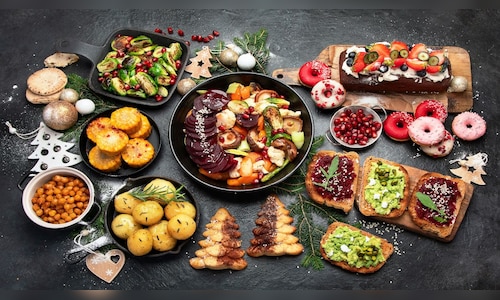What is GST on restaurants?
The government imposes GST on restaurants according to their type and structure. Currently, there are three primary slabs in effect:
5%: Applied to restaurants that do not claim input tax credit (ITC), which encompasses most standalone restaurants, whether it’s dine-in, takeaway, or delivery.
12%: Applicable to restaurants in hotels with room tariffs exceeding ₹7,500 that choose to claim ITC.
18%: Relevant for outdoor catering services that claim ITC benefits.
GST has replaced the previous tax system involving service tax and VAT, providing a unified framework.
What the law says vs what happens in practice
In theory, GST rates should uniformly apply across dine-in, takeaway, and delivery services. However, the reality is that the method of service can influence how GST is collected, especially in the case of food aggregators.
ALSO READ | How credit card deals and restaurant offers are transforming the dining experience
“We adhere to the applicable GST structure — 5% for dine-in, takeaway, and delivery orders without input tax credit. Our complete transparency in billing fosters customer trust across all service formats,” stated Paras Teotia, Co-Founder of Curry Crown, a restaurant chain operating under the standard 5% slab.
Restaurants registered under the composition scheme, available to those with annual turnover up to ₹1.5 crore, pay a reduced fixed tax of 5% but cannot charge GST on bills or claim ITC.
Impact on pricing and strategy
For many restaurants, GST is not just a regulatory requirement. It significantly influences menu pricing and the total amount customers pay.
“While GST impacts our pricing strategy, we strive to maintain fair and accessible menu prices, absorbing part of the tax burden internally to provide value to our guests,” Teotia added.
Others mention the operational challenges stemming from tax exclusions.
For instance, not being able to claim ITC means that restaurants absorb the full cost of GST on essentials like ingredients, rent, and utilities.
“Reinstating input tax credit could enable restaurants to invest more in quality ingredients, infrastructure, and enhanced services,” Teotia remarked.
Aggregators and online orders
For food ordered via platforms like Zomato or Swiggy, the responsibility for GST collection shifts.
“In the context of aggregator platforms, GST is collected and managed directly by the platform. Customers still see the GST breakdown, but it’s the platform that remits the tax to the government,” said Yogesh Sharma, Founder & CEO of Karigari, a premium dining brand.
Transparency is key
Restaurants are focusing on transparent and compliant billing practices. Karigari, for example, emphasizes clear GST protocols as part of its customer experience approach.
“We believe that an excellent dining experience encompasses not only outstanding food but also honest, transparent communication. Our billing practices reflect both compliance and a commitment to building trust,” Sharma stated.
He noted that GST influences everything—ranging from dish pricing to customer value perception.
“Customers are aware of the final billed amounts. Transparent and inclusive pricing helps build trust and eliminates surprises at the time of billing,” Sharma added.
ALSO READ | How dining out is now also about loyalty perks, experiences and storytelling



